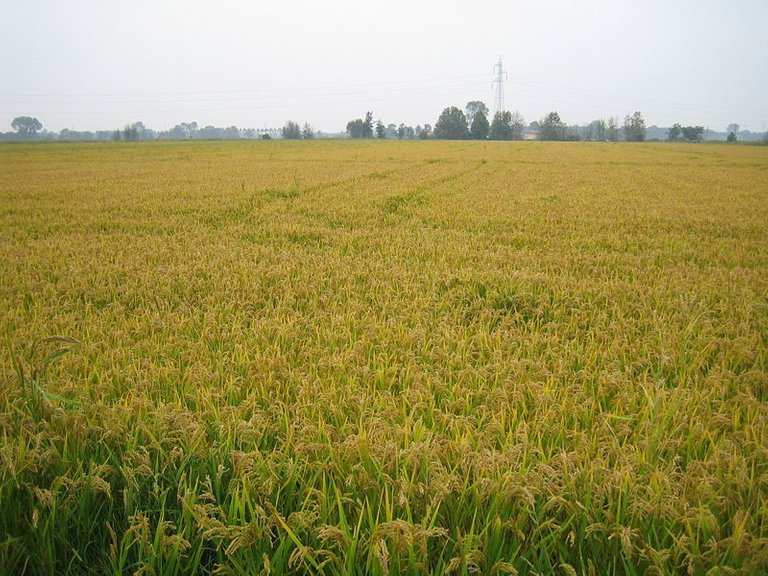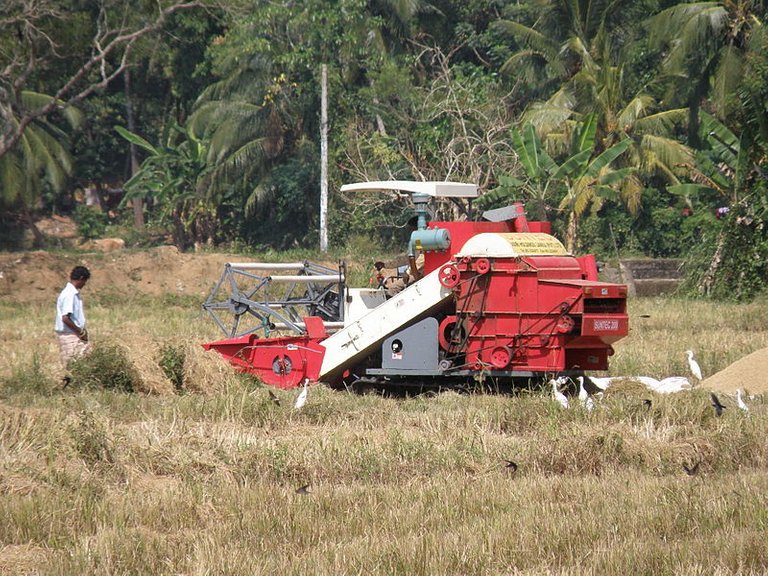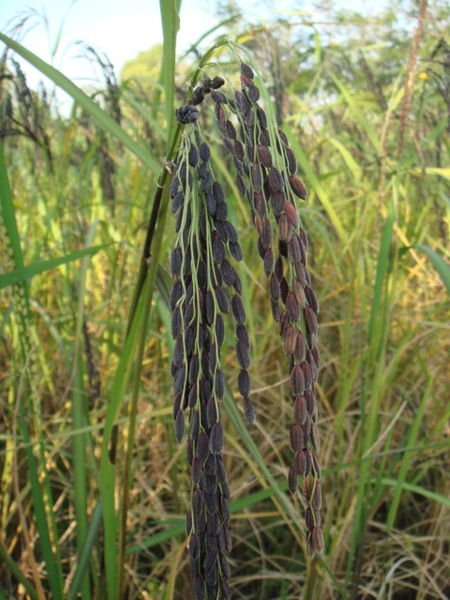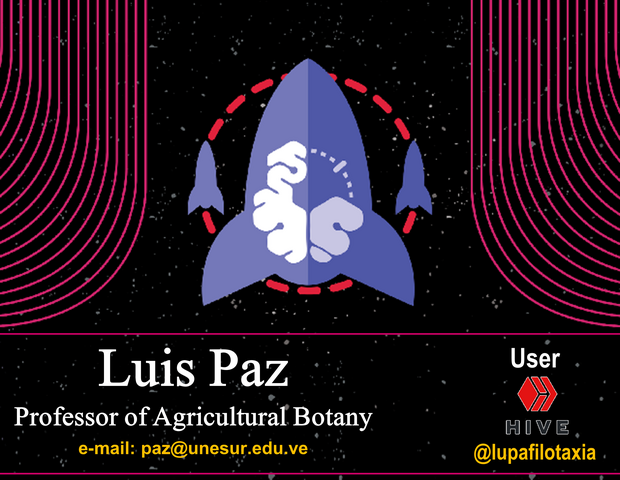Oryza sativa main species of agronomic and economic interest in the family Poaceae

In this delivery, the content to be socialized deals with the botanical characteristics, phenological behavior, agro-economic and nutritional potential of the species Oryza sativa (Poaceae).
Introduction
The species Oryza sativa, commonly known as Rice, has been qualified as the cultivated vegetal material, of greater consumption within the family Poaceae, this according to the reported thing by the Organization of the United Nations for the Feeding and the Agriculture - FAO, in whose registries it is indicated that rice, serves as essential food for 34 countries at world-wide scale [1].
The production data, which is monitored and disseminated annually by FAO, confirms the agronomic, economic and nutritional importance of the plant species Oryza sativa, basically because it provides about 20% of the food energy consumed worldwide, surpassing other cultivated species such as Wheat (Triticum aestivum) and Corn (Zea mays).
Now then, knowing the utilitarian importance that the plant species Oryza sativa, has, the aim of the present post is to socialize botanical aspects related to the phenological, agronomic, economic and nutritional behavior, of this important biological resource.
Botanical characteristics
Taxonomically the species of the genus Oryza, are located in an artificial way in the division Magnoliophyta, class Liliopsida, order Poales and they belong to the family Poaceae (previously Gramineae), they exhibit biotype of herbaceous consistency, annual phenological duration and therophyte biology, standing out the species of Asian origin and widely domesticated O. sativa, as the material of better adaptability and profitability at agronomic level.

Extension of cultivated area of Oryza sativa. Public domain image. Author: Gabriele Bellotti – 2008.
Morphology of Oryza sativa
From the morphological point of view, Oryza sativa presents erect cylindrical stems, adventitious and fibrous roots in rhizome form, foliar laminae with membranous ligules, of sessile insertion, alternate phyllotaxy, parallelinerineal veins, panicle-shaped inflorescences and caryopsis-type fruit.
Agronomic aspects
Domestication of Oryza sativa
The domestication of Oryza sativa, responds naturally to tropical and subtropical edaphoclimatic factors, an element that contradicts the production records, which locate countries with temperate climates, with more than 80% of the grains harvested worldwide, as a result of the technification and agronomic management conditions executed under artificial contexts [2].
However, for cultivated areas in tropical eco-regions, the species Oryza sativa, is usually cultivated profitably, sustainably and efficiently at less than 1,000 m.a.s.l., seasonal rainfall of more than 2,000 mm2 , average temperatures around 32°C, soils with a medium-sandy texture tending to sediment and with alkaline pH [3].
Phenological behaviour
In relation to the phenological behavior, Oryza sativa starts its germination after 7 days, either in aerobic or anaerobic conditions, time in which the radicle is observed emerging from the caryopsis, continuing the vegetative growth phase of the stem, determined by the differential formation of nodes and internodes, which later, trigger the active macol isolation and the beginning of the stage of seedling enlongation for approximately 53 days, a period that gives continuity to the reproductive phase, with the appearance of the floral primordial, agronomically this period of production that sequentially culminates with the maturation of the grains, develops in a period estimated of 60 additional days, for a total phenological cycle estimated in 120 days [4].
Technical-agronomic handling
The technical-agronomic labors, used in the cultivation of Oryza sativa (Rice) are programmed according to the edafoclimatic conditions of the zone where it is decided to establish as monoculture, either by flood or dry land, representing the agronomic labors of the system by flood, the most complex and of greater economic investment, essentially by the management of the humid land.

Cultivation of Oryza sativa, under flooding system. Public domain image. Author: Fritz Geller-Grimm – 2006.
Within the labors of management of the humid land, there are; preparation and leveling, sowing, water discharge until reaching a layer of 10 cm of depth, fertilizer application considering the physical-chemical values and availability of MO (organic matter) in anaerobic conditions, control of arvenous macrophytes of floating or emergent behavior, application of insecticides to diminish the populations of insects that thrive in humid conditions among these, the Lissorhoptus brevirostris (aquatic weevil).

Rice Harvesting Machine Oryza sativa, grown under dry system. Public domain image. Author: BluesyPete – 2012.
Agro-economic potential
Agronomic performance
According to the data, reported by the Food and Agriculture Organization of the United Nations - FAO, the yield per hectare of Oryza sativa (Rice) ranges from 7.2 to 9.8 tons/ha, while world production is above 751.9 million tons, China being the largest producer with 28% of total rice grains generated worldwide (table 1).

Grains to be harvested, black rice, Oryza sativa. Public domain image. Author: Gak – 2007.
Table. 1 Main producing countries of Oryza sativa (Rice), according to [2]:
| China | |
| India | |
| Ejipto | |
| Madagascar | |
| Brasil | |
| Perú | |
| EEUU | |
| Rusia |
Nutritional potential
The Oryza sativa (Rice), is the most consumed cereal among the specimens of the family Poaceae, the white rice grains are characterized by being a sink of starch in its endosperm, hence, constitute an important source of amylose and amylopectin, in addition to protein, iron, zinc and fiber (table 2).
Table. 2 Nutritional composition of Oryza sativa grains (Rice), according to [1]:
| Protein - g/100 g | ||
| Iron - mg/100 g | ||
| Zinc - mg/100 g | ||
| Fiber - g/100 g |
SCIENTIFIC CONTRIBUTIONS OF THIS PUBLICATION
- The scientific-agronomic contribution of the socialized content on the utilitarian botany of the species Oryza sativa (Rice), has several approaches in the post, mainly those related to the botanical characteristics, agronomic aspects, agro-economic and nutritional potentiality, when describing the main morphological attributes, domestication and phenological behavior of the species, technical-agronomic tasks used in the flood sowing system, besides presenting in a schematic way the main rice producing countries and the nutritional composition of the white and purple grains of O. sativa.
BIBLIOGRAPHICAL REFERENCES CONSULTED AND CITED:
[1] FAO. El Arroz y la Nutrición Humana - Año Internacional de arroz. 2004; 1. Article: Online access
[2] FAO. Seguimiento del mercado del Arroz de la Organización de las Naciones Unidas para la Alimentación y la Agricultura. 2017; 10; 1: 1 - 10. Article: Online access
[3] Jifeng Y., Shaobing P., Qingrui H., and Hong Y. Comparison of high-yield rice in tropical and subtropical environments: I. Determinants of grain and dry matter yields. Field Crops Research. 1998; 57; 71 - 84. Article: Online access
[4] Hattori Y., Nagai K., and Ashikari M. Rice growth adapting to deepwater. Current Opinion in Plant Biology. 2011; 14; 1: 100 - 105. Article: Online access
[5] Ismail A., Ella E., Vergara G. and Mackill D. Mechanisms associated with tolerance to flooding during germination and early seedling growth in rice (Oryza sativa). Annals of Botany. 2009; 103; 2: 197 - 209. Article: Online access
ATTENTION
Readers and followers
If you wish to read more scientific articles in English or Spanish, of excellent academic quality, do not hesitate to visit #STEMSocial and #STEM-espanol, communities that promote scientific content mainly in the areas of Science, Technology, Engineering and Mathematics.

0
0
0.000
#posh Twitter:
https://twitter.com/lupafilotaxia/status/1271690601633898496
Thanks for your contribution to the STEMsocial community. Feel free to join us on discord to get to know the rest of us!
Please consider supporting our funding proposal, approving our witness (@stem.witness) or delegating to the @stemsocial account (for some ROI).
Thanks for using the STEMsocial app and including @stemsocial as a beneficiary, which give you stronger support.
Thanks for the backup.
Greetings @lupafilotaxia, excellent description of a crop that in many countries, is a staple product, without a doubt is one of the species of the family of poaceas of greatest importance worldwide. The content presented is very complete, we continue to communicate !
Greetings @amestyj, thanks for your visit to the blog.
In fact, when I was developing the elements to be considered for this thematic series, the main focus was to be able to present a complete scheme, which will systematize, besides the information on botanical characterization, the agronomic, economic and nutritional content, in order to present theoretical contributions of practical use for users interested in areas such as plant biology, agri-food production and for lovers of knowing the potential agricultural markets of a given crop.
Congratulations @lupafilotaxia!
You raised your level and are now a Minnow!
Support the HiveBuzz project. Vote for our proposal!